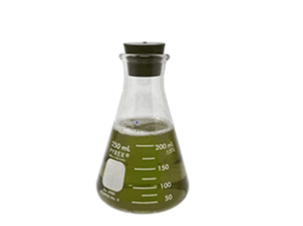MEDICINAL PROPERTIES OF RICINUS COMMUNIS AND THE NEED FOR NOVEL FORMULATION OF THE EXTRACTS: A REVIEW
Keywords:
Bioactive, extracts, nano-formulation, phytochemicalsAbstract
Some drugs from plant and animal sources have proven to be efficacious, safe, and effective therapeutically. They are potential alternatives to synthetic and semi-synthetic drugs in treating diseases, especially the chronic types. Ricinus communis is one such plant that has been used traditionally for centuries as a medicinal plant in the treatment of a wide range of ailments and disorders like stomach aches, flatulence, constipation, and gallbladder pain. Others include dysmenorrhea, rheumatism, arthritis, backache, muscle aches, and toothache. In addition, other uses include chronic headaches, insomnia, placenta expulsion, and anti-fertility. However, there is a deficiency of novel formulations of the extracts to maximize their therapeutic benefits. The phytochemicals in Ricinus communis are extracted via direct expression of the seed and solvent of both the seed and the different plant parts. Some solvents used for extraction include ethanol, petroleum ether, methanol, ethyl acetate, toluene, benzene, hexane, and chloroform. The constituents of the extracts depend on the plant part used, the solvent employed, and contact time. The phytochemicals found in the various extracts include tannins, saponins, phenols, alkaloids, glycosides, phytate, fatty acids, steroids, oxalate, and volatile constituents. These extracts are found to elicit a wide range of pharmacological activities against bacteria, fungi, cancer cells, worms, conception, constipation, pain, and malaria. In addition, some of the pharmacodynamic activities are laxative, uterine contraction, antiasthmatic, antidiabetic, anti-inflammatory, and anticonvulsant. The extracts are also useful in bone regeneration, wound healing, liver protection, and a host of other pharmacological actions. Novel products of Ricinus communis are not available. Subjecting the extracts to advanced drug delivery formulations such as lipid-based drug delivery technologies would accentuate the dissolution, absorption, and bioavailability of the extracts of Ricinus communis just like other herbal formulations currently in the market. Therefore, there is a crucial need for formulation scientists to explore novel nano-drug delivery technology to formulate extracts into medicines for the improvement of public healthcare.

Peer Review History:
Received: 7 August 2023; Revised: 11 September; Accepted: 24 October; Available online: 15 November 2023
Academic Editor: Dr. Tamer Elhabibi , Suez Canal University, Egypt, tamer_hassan@pharm.suez.edu.eg
, Suez Canal University, Egypt, tamer_hassan@pharm.suez.edu.eg
Reviewers:
 Ali Jaber, Laboratory for Research and Development of Medicines and Natural Products, RDMPN, Faculty of Pharmacy, Lebanese University, Beirut, Lebanon, ali.jaber.2@ul.edu.lb
Ali Jaber, Laboratory for Research and Development of Medicines and Natural Products, RDMPN, Faculty of Pharmacy, Lebanese University, Beirut, Lebanon, ali.jaber.2@ul.edu.lb
 Prof. Ali Gamal Ahmed Al-kaf, Sana'a university, Yemen, alialkaf21@gmail.com
Prof. Ali Gamal Ahmed Al-kaf, Sana'a university, Yemen, alialkaf21@gmail.com
Downloads

Published
How to Cite
Issue
Section

This work is licensed under a Creative Commons Attribution-NonCommercial 4.0 International License.









 .
.